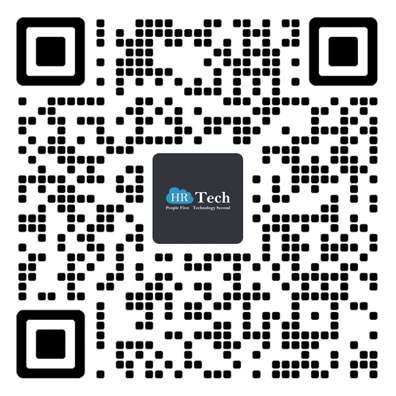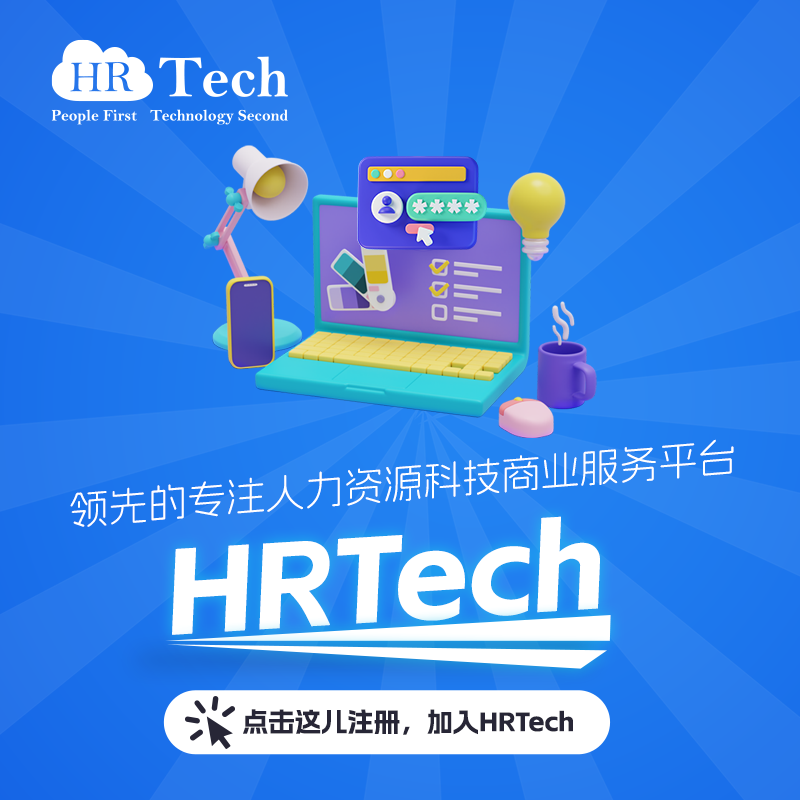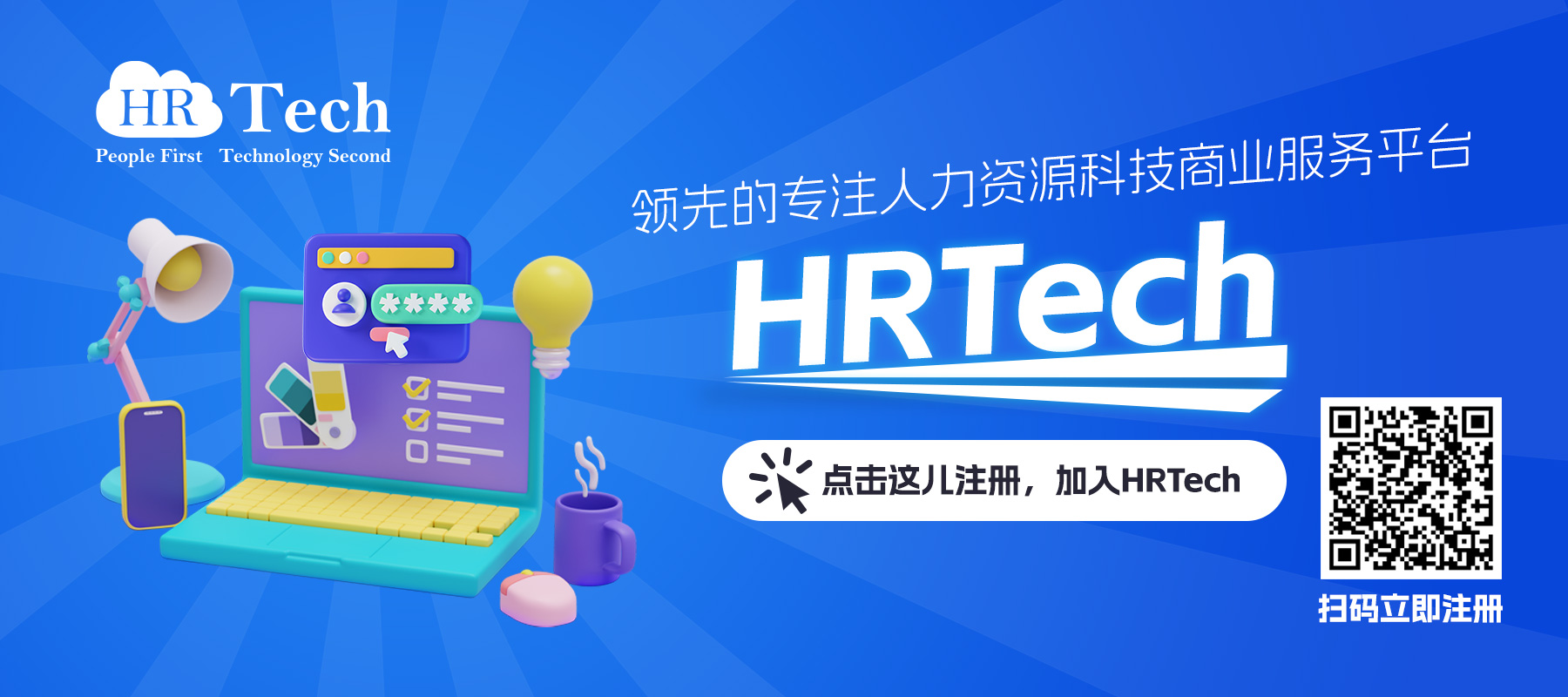观点
传说中的用数据招聘可能是这样
编者按:本文来自醉创业(微信号:drunkstartup)。原文来自 First Round Review,由醉创业编译。
导语:
如果说创业以来,对做一个公司的哪方面感触最深,那一定是招聘。作为「人」的信徒,我一直觉得,能否做成一件事,一切最终都会回归到「人」上。可惜,人也是最复杂的动物。「醉创业」也从没停止讨论过这件事。关于创业公司如何招聘这件事,我有很多零碎又深刻的记忆。
想起 Sam Altman 说的,创业公司应该「Hire the best people you can」,现在再想起来,什么是 hire, 什么是 best, 什么是 you can,都有了些新的认识。
想起人们总在争论,早期员工应该有一定的「多样性」(diversity),还是风格都差不多更好。
想起雷军老师初期招人,在大公司楼下的咖啡厅一坐,轮流给人打电话说下来坐着聊聊。也想起钱晨老师看不上罗永浩老师,后来又加入的故事。
想起 CS183C 里 Reid Hoffman 说,早期你应该多雇 generalist, 越往后你应该越雇佣多一些 specialist。当然,能不能把他们搞来就是你的本事了。
想起年初去 Zenefits 参观时,中国的员工给我讲他们一年多从 30 人到 600 多人的神 (kong) 奇 (bu) 经历,与文化上的巨大挑战。
想起和朋友喝酒时我诉苦说,哎公司太小没钱又没品牌,招好的人很难。也许度过这个弱小的时期,之后再融融资可能会好点儿。然后朋友看着我说:在公司的任何阶段,你都应该找的是能把公司带到下一个层面的人。所以之后如果你的招聘变容易了,那就说明你的标准放太低了。
......
「招聘」真正的纠结之处在于,它是一种很难预估「投入产出比」的东西。虽然我们一直被教育「招人很重要」,但我们也都遇过那种,面试了几十个人,或者搜寻身边一大堆朋友,仍然碰不到合适人选的挫败时刻。这时候,「调整一下产品界面」和「做一点市场营销活动」就看起来更有吸引力了。于是,我们时间的天平就开始远离招聘...好的人自然也就不会自动出现...如此循环,万劫不复。
这篇文章又描绘了我幻想过的另一种招聘景象,那就是你的 HR 突然像销售团队管理销售业绩那样开始用数字管理招聘了...她 / 他们不但知道要招来一名好的工程师首先需要看多少份简历,还能告诉你每个招聘渠道的成功率是多少,或者去哪个学校宣讲的成功概率最高...妈呀,这简直是仅存在乌托邦里的故事。我不知道有多少创业公司能做到,maybe data-oriented recruiting is like teenage sex. Everyone talks about it, nobody really knows how to do it......但是不管怎样,看看也是好的。
正文:
Eric Feng 在仅仅三年内就将 Hulu 改变了很多。作为该公司雇佣的第一个高管,他在发展 Hulu 网页、App、市场推广及营销方面扮演了至关重要的角色。同时,他还是公司的发言人,甚至自己编写了网站前端的大部分代码。他的付出得到了回报——Hulu 一跃成为了第二大视频网站,每月吸引着 4300 万名观众。Eric 的一个特殊技能将以上变为可能:他非常会招聘。
在他离开上一家公司的时候,就已经组建并领导了一支横跨技术、产品、设计和运营领域的 80 人的队伍。现在,作为 Flipboard 的首席技术官,他在用自己学会的众多策略培养另一支明星队,尤其是这一条:
你需要像重视产品数据一样地重视招聘数据。你是否将候选人入职率看得与产品 DAU 一样重要?你的 HR 是否能除了告诉你招聘进行得不错,还能用数字告诉你为什么不错?
「W·Edwards Demming (通常被认为是世界上第一个数据科学家)说过,『你无法管理你不能测量的事物。』(You can't manage what you don't measure)」Feng 说。在我们最近一次 CTO 论坛上,他概括了他处理招聘数据、吸取重要教训的策略,以及如何将他们学以致用。同时,他也为公司如何将世界级人才招进门提供了很多忠告。
开始
你需要的第一个公式比较简单。当你在考虑招聘每一级的目标数值时,就直接把上一级的数值除以 4。像很多其他 HR 经理一样,Feng 指出了在招聘流程中的四个重要阶段:寻找、筛选、面试、聘用。
当你考虑需要雇用多少人的时候,做一些快速的除法(或者乘法,取决于你从哪头算起)就可以。假设你现在想招一个工程师,你的招聘倒金字塔应该看起来这样:
如果你确定了 64 个候选人
应该会有 16 个能够进入到你的筛选阶段
4 个人能够走到招聘阶段
1 个人应该拿到最后的 offer (并且他非常有可能会接受这个工作)
当然,这只是一个大致的指导方针,但它很有帮助。「当你明白这个流程以及你在每个阶段需要有大概多少人,你就能够调整那些不是很平衡的地方。」Feng 说道,「就像个漏斗一样,如果你想招一个人,你的漏斗最上方就不可能只有一个人。那样是不会成功的。我可以向你保证。」
去算一下这些数字,按照每一级别除以四的标准,你就能找到在招聘过程中出现的问题或效率比较低的地方。
当然,在每一个阶段,仅仅数字上成立是不够的。还有一些可以帮助创业公司招聘到最好人才的方法:
找人:从 64 到 16
在你进入到下一步之前,你需要去找到足够多的满足你要求的候选人。Leader 们在这一过程中最重要的就是要做到多样化。也就是说,你应该在三个最大的招聘渠道中找到数量大致相当的候选人:主动招聘、等待招聘(即候选人自己找上门)和内部推荐。当来自一个渠道的人数明显超过了其他渠道,公司就会出现问题。所以你需要知道来自每一个渠道人员的数字,Feng 说。
「接受内部推荐但不要只关注内推。如果你只关注内推,你的候选人圈子就会缺少多样性。而且当你用完你的人际关系时,内推这个渠道也会开始枯竭。」要建立一个可持续的招聘通道,一个可以在公司壮大的时候能够继续满足你的招人需求的通道,这要靠你对于这些渠道的掌握:
内部推荐(最受欢迎的渠道):
「我看到有些公司实行内部推荐项目时犯的最大错误就是当他们说,『好了,现在我们得进行内部推荐,所以我们要给推荐人发奖金。来吧。』」金钱鼓励很好,但是 Feng 说,一个成功的推荐渠道需要的不只是奖金。事实上,你应该不断向你的团队告知你现在最需要什么新人选。
「在 Flipboard,这已经成为新职员入职流程的一部分了:在第一周,新人们和招聘队伍坐在一起,讨论公司的内推机制。」Feng 说。他们坐在一起的时候,新职员甚至会被要求快速过一遍他们在 LinkedIn 和 Facebook 的关系网,看看他们有没有认识的可以推荐的人。
内部推荐不应该止步于此。「你应该在每周的内部讨论会和员工大会时强调空缺的职位,比方说,『嘿,数据组缺两个人,他们需要这样那样的经验。』这样的信息往往能走得很远。」
Feng 甚至定期在 Flipboard 举办人员内推活动,他把寻找优秀候选人变得非常简单,只需要团队的人带着他们的笔记本电脑和披萨,聚在一个房间里就行了。「HR 走进来告诉大家现在空着的职位。然后我们让所有人都坐下来刷一遍 LinkedIn, Facebook, Twitter, GitHub,任何他们可能会认识人的地方,然后列出一个推荐人的名单。」
积极强调这件事在鼓励人们推荐候选人方面十分有效。
在推荐人入职的第一周的员工大会上,我们不仅会欢迎新来的人,还会说明这个人是怎样进入公司的。我们会当场给推荐人奖金。
这是一个对于推荐制招人所能带来的双赢局面的一个非常公开的、有价值的提醒。在看到过这一幕之后,人们会把推荐这件事情牢牢地记在心中。
主动招聘:
Feng 说,高效地进行主动招聘的一个秘诀就是在意想不到的地方寻找候选人。「很多人看完 LinkedIn 之后就算结束了。这样是行不通的。你需要有一个非常多样化的索引,这个索引应该连结你平时寻找候选人的各个地方。」
首先有一些已经证明可行的地方:Facebook,Github,Stack Overflow 。Feng 也建议创业者们去看一些较新的市场,像 Whitetruffle,Hired.com,Greeklist,和 HackerRankX 这些网站对寻找资历较浅的应聘者尤其有用。
当你在招聘倒金字塔顶部时,找招聘 / 猎头机构仍旧是帮助寻找人才的重要方法。「只要你让招聘机构去做他们最擅长的工作,他们就会很有价值,他们能够帮你找出一列可以从中挑选的候选人。我发现机构能够很好地寻找资历较深的应聘者。」Feng 说。
等待招聘(Inbound recruiting):
「无论你是一个小公司还是谷歌,都应该有一群人积极地来到你的公司应聘职位。」Feng 说。但不管你是推销产品还是空缺的职位,你的秘密武器都是一样的:会讲故事。
越来越多的公司正在远离传统的「条件加要求」式的职位描述,他们希望更全面地展现公司,以及说明他们招人的职位是如何的重要。Medium 公司就是一个很好的例子,它贴出来职位描述的目的就是告诉读者在这个公司的工作生活是什么样子,以及如果加入这个公司他们可以期待些什么。在这个非常有创造性方法的的基础上,Flipboard 更进一步,为每个功能区都创建了自定义网页,在功能区中引用了该区高管的原话,也链接了该队伍中其他成员关于 Flipboard 产品的分享。
就算你刚刚写下了招聘页里最吸引人的职位描述,把它上传公司网站就放着不管了是远远不够的。「你需要把话说出来。你需要在尽可能多的地方把那个故事讲出来,在任何你的目标候选人可能会搜索的地方。大约有 40%的人用 Facebook 和 LinkedIn 之外的社交网站找工作。」
你知道你的公司有着令人激动,快节奏的工作环境,所以一定要确保你的招聘启事不是在漫不经心地讲着一个并不准确的故事。
不要让你的招聘启事变得过时。大约在 16 周之后,你会看到人们对这份启事的兴趣大幅下降。如果你遇到了那个兴趣下降的时间点,直接把这份启事撤下,把它重新调整一下,过一周后再把它发布出去。
一旦你收到了感兴趣的人发来的材料,你需要快速地做出回应,保持住这些人的兴趣。「不要忘了,寻找人力资源的同时也是营销。在每一个寻找职员的渠道中,你需要在开口的同时用各种方法来推销你的公司。」
对于推荐来的候选人:你需要充分利用推荐的那个人。「你可以说:『嘿,Susan 跟你是同学,你觉得 Susan 很棒,Susan 也觉得你很棒,我们应该聊聊。』」Feng 说。如果你只是简单地打了个电话,你的推荐人就失去了他的作用。「你因为和推荐人的关系有了其他公司没有的优势。一定要利用好这个优势。」
对于主动招聘过来的候选人:Feng 说当你联系潜在的候选人时,最重要的就是要胆子大,不要不好意思直接说出你的目的。「LinkedIn 公布了一组很有趣的统计数据:在任意一个时间点,只有 25%的员工在主动地寻找新工作,但是 85%的人都愿意谈一谈。」你挑中的候选者很有可能对你发来的邮件很感兴趣。
即便如此,你不能粗心大意。「你需要有人情味。也许你会用到邮件群发。也许你用了很多自动化操作。你用到了复制粘贴。但是尽你最大的努力使得这份邮件看起来像个人写的,因为这是候选人们会用的第一个筛选条件。」Feng 说道。尽可能地把你的交流变得个人化,并且一对一回应候选人申请的动机。尽量保证这份电子邮件的短小精悍。邮件越长,你看起来就越迫切,你就放弃了更多的权利。
对于等来的候选者:「当你收到简历或者关于求职的邮件时,你应该 100%地回复他们。你真的应该这样做。当别人花时间联系到你的公司的时候,你没有借口不去回应。」Feng 说。你的回复可以很简单,几行字就可以。如果说招聘就是销售,那么你的回复率应该跟你公司销售人员的回复率一样高。
「如果你的客户想要抱怨,如果他们直接发邮件告诉你出了故障,你八成会回复。同样的,如果有人对你的公司感兴趣,想要为你工作,你应该拿出刚刚那一份对顾客的尊重。」要记住世界很小,消息会到处传播。你会希望每个人都认为你很棒,都能听到对你的高评价。
筛选:从 16 到 4
到了这一步,你搜寻候选人的努力帮助你收获了一批高素质的潜在雇员(差不多是你寻找总人数的 24%)。现在到了该评出前 16 位你最感兴趣的候选人,然后选择其中最好的 4 个来面试的时候了。这步寻找候选人和面试中间的关键步骤是很多公司的招聘流程有最大提升空间的地方。
「我是一个工程师。我喜欢将科技应用到实际生活。在整个招聘过程中,筛选这一步是我看到的最有可能用技术的方式,做出重大改变与提升的地方。」Feng 说,「这一切全都从数据开始。」
对于新手来说,如果你没有在用申请人跟踪系统(applicant tracking system)的话,你应该现在开始用了。「研究表明,通过申请人跟踪系统,你至少能够提高 50%的效率。」而且现在有大量的跟踪系统可供选择。找到那个最适合你招聘需求的系统。重点是一旦你开始用了这个软件,你招聘所花的精力也就有了一层数据覆盖。
没有数据,你无法发现你在哪一环节出了问题——我成功了吗?还是失败了?
你需要找到一个你可以存储并且经常提取数据的方法。Feng 推荐公司从追踪以下四个招聘数据开始:
所有的空缺职位
你得到的所有关于候选人的信息
候选人完整的就职经历
你有的关于候选人的所有反馈信息
「如果你把这四个东西存在一个数据库的某处,在那一刻,你就有了能够评价你招聘水平的原始资料。」Feng 说。
除了帮助你分析你的筛选过程,技术能够做到更多——它还能够实实在在地帮你筛选。电话和邮件筛选是很普遍的方式,但是 Feng 认为,语言只能表达出一位候选人真正想表达的一半不到的内容,想想身体语言,面部表情等等。
「视频筛选是一个能够收集到候选人更多信息的有效方法,而信息能够帮你做出更好的决定。」从 2011年 以来,Feng 提到,视频面试的使用增加了 49%,10 个人力资源经理里有 6 个都在用视频面试候选者。
对于招聘工程师来说,编码挑战是另外一种很有效的方法,能够利用科技快速而且有依据地在筛选过程中更多地了解一个候选者——用 Feng 的话来说,就是能够提取更多的信息——花费最小的精力。「在 Flipboard,我们建了网站 chanlleng.flipboard.com,在这里我们上传各种工程问题。我们大部分的候选者都参加了这个挑战,我们获得了很多有趣的数据。」Feng 说。
为了能最好地利用这个挑战,Feng 举出了一些要做和不要做的事情:
Do:建一个你自己的编程挑战。「你可以用第三方服务,而且现在有很多这种服务,但构建你自己的挑战其实很有意思。」在 Flipboard,建编程挑战甚至变成了鼓舞员工士气的一部分。「我们让公司的工程师做我们出的题,这样很有意思,而且我们知道这题出得难不难了。」
Don't:弄得太复杂。「你不需要分 A/B 组测试你的题目。你不需要为一个职位写 7 个不同的测验。」这样就会浪费很多时间,回报率也很低。
Do:出开放式的题目。「挑战是否只是针对一种特定的语言或者领域并不重要。」一个开放的挑战才是最有效率的,而且可以重复使用,所以让每一个候选人用他自己最舒服的方式解决问题吧。
记住,我们的目标是尽可能多的开展可以帮助筛选技能的交流。本着发掘每个候选者新的一面的目的,你可以在每一个电话筛选或者面试中寻找。「我们直接问候选人关于这个挑战的感觉。」Feng 说,「『你为什么决定用这个语言?为什么你决定用这种方式执行?』」通过每个人关于刚刚自己行动的解释,我们能够筛选出表现优异而且善于交流的能力者。
面试:从 4 到 1
等你到了现场面试这一步的时候,你就在和你候选人圈子里表现最好的那一拨人打交道——而你还要再淘汰他们中的 75%。
「我发现面试这一步实际上是整个招聘流程里最有争议的地方之一,因为我们假定 25%的成功率——也就是非常高的失败率。」Feng 说。考虑到这也是整个流程里最贵的一步——你贡献了你的时间,甚至还有你团队的很多时间,还有可能需要付飞机票,住宿费,晚餐费,还有更多——这样高的失败率可能让这一切的花费听上去很不合理。
但 Feng 坚持这是十分值得的。「当你在面试的时候,你实际上是在努力做四件要事:评估能力,当然还要互相评估合适度;你还需要达成团队内部的一致;你需要让你的团队相信你们招了一个很好的人;最后,你有一个建立公司口碑的机会。」
值得注意的是,无论你是否最后聘用了一个候选人,你能够完成四件事中最后的两件。大多数公司甚至并不把招聘看作是一个可以加强他们口碑或者锻炼当前队伍的机会。这里有很多可以利用的机会。
公司可能也想不到那 75%的人在离开面试之后会做什么,这也是一个错误。对于一个人来说,在跟你公司几周的深度交流之后,他可以随时成为你公司的品牌推广大使——也可能不会。
你的招聘过程是对你公司品牌的一个深刻反映。
「候选人会跟人们谈论你的公司。他们可能说好话也可能会说坏话。和候选人一起的整个过程是你创造一个热情支持者的机会,他会帮你把你的信息传递给这个世界,这是非常有用的。」Feng 说。
候选者同时也是潜在客户。你在招聘过程中对待他们的态度会影响到他们是否想要用你的产品。「确保你考虑到了品牌推广这件事。如果你最后没有聘用那个人,不要认为面试是浪费时间或者是一个傻的差事。」Feng 说。无论面试结果如何,都可能得到一个积极的结果。
把所有环节拼在一起
当你熟悉地明白了你招聘的过程——分解到不同阶段,在每个阶段都达到目标数字——你就可以更好的了解你的公司运行地如何了。除此之外,你可以重点关注如何在表现不佳的环节改变、完善以及试验你的步骤,Feng 说。
你是否最后面试了 30 个候选人并且浪费了很多时间?或者你是否只面试了一个人——如果是的话,那是因为你在搭建招聘倒金字塔的时候没有找到足够多的人,还是因为你筛掉了太多的人?「通过数字来了解招聘过程是怎样运行的,真的能够帮助你清楚地看到不足,并且让你有机会把这些系统中不足改掉。」
观点
中国拼速度,硅谷看技术
版权声明: 本文作者李北辰
导读 : 当谈及两地创业公司差别时,里德·霍夫曼多次重复了“速度”二字:“中国的企业家非常有活力,积极主动,你知道硅谷的速度是很快的,但中国比硅谷的速度还要快。”
里德·霍夫曼先生又来中国了,且这次比往日更忙一些,短短几日,从LinkedIn自家的“领英·影响力”,到腾讯WE大会,如新戏宣传期的演员一般繁忙赶场,似乎并未让他露出疲态。霍夫曼先生上周末的最后一场活动,是领英在北京大学斯坦福中心举办的第九辑“领英·影响力”,与他对谈的是其多年好友,日本互联网第一人,MIT媒体实验室总监伊藤穰一,对谈主题则是:商业的未来。
嗯,作为一项在不确定性中调动理性与感性,运气与勇气的全能游戏,谈论商业的未来着实是个令人兴奋的话题,而你得承认,身为LinkedIn联合创始人兼执行董事长,投资过Facebook、Zynga、Airbnb、Flickr、Mozilla等160多家创业公司的“硅谷人脉王”——一个十足的“商业明星”,霍夫曼绝对是谈论这个话题的好人选。
但也许是身在中国的缘故,除了与伊藤穰一的对谈,几场活动下来,里德·霍夫曼谈及最多的仍旧是中国与硅谷——两个全球创业热潮最高涨的地理坐标之间的异同,尽管用“对标”二字定义14亿人口的中国和400万人口的硅谷稍显怪异,但至少在霍夫曼自己的举例中,全球前15个上市互联网公司之中,中国占了5个,硅谷则有8个。
当谈及两地创业公司差别时,他多次重复了“速度”二字:“中国的企业家非常有活力,积极主动,你知道硅谷的速度是很快的,但中国比硅谷的速度还要快。”他举了LinkedIn在中国自身的例子,“沈博阳是领英(中国)的负责人,我们把整个开发团队放到一个酒店开发产品,这在硅谷是不可能的,中国人速度就能这么快。”
当然,在多数方面,中国与硅谷之间尚存巨大差距,中国可能追得上,也可能永远不,但毫无疑问,不同的优势与积淀,让这个时代两位big player都探寻出了属于自己的游戏规则,以及未来更多共舞的可能。
让我们听听霍夫曼怎么说——
在里德·霍夫曼看来,中国与硅谷的首要共性,即是“都拥有广大的本土市场,这也意味着企业家首先要针对本土开发非常好的成功的产品,然后再把它做大。”当然,他也同时强调了硅谷特殊的“全球视野”基因,“硅谷企业从一出生就有一个全球视野,几乎所有硅谷创业公司只要产品一发布都是全球性的,比如说Facebook,其实是专门有一个语言的应用提供给用户,是支持世界上所有语言的……硅谷更擅长把企业推向全球,现在中国有一些创新理念,他们更关注的是中国市场本身,而我们更关注直接走向世界。”
第二,同样浓厚的创业文化——而创业文化的一部分就是愿意承担风险,不断尝试失败,中国和硅谷这方面都做得非常好。
第三,技术人才。从全球来看,中国和硅谷是唯一两个能拥有大量技术人才的地方。
第四,竞争。中国有很多——硅谷也是,数以千计的初创企业在竞争,所以有很多的并购,他们不断地发生演变。
第五,融资环境。可以获得大规模的风险投资,这能让企业迅速做大,中国和硅谷在这方面也做得非常好的。
当然,相比于共性,中国与硅谷的不同之处似乎更值得被探讨,就拿融资环境来说,举个例子,如你所知,尤其当各个领域已露锋芒的创业项目进入中后期,相比于硅谷基本由专业VC机构投资,中国则更多地由BAT主导,而哪怕像苹果亚马逊这样的科技巨头,也没有像BAT这般(尤其是腾讯)在诸多领域广撒网,他们更多偏向投资那些技术门槛相对高企的团队,且多数时候与自身业务息息相关。
你或许可以把这种差异理解为视野与格局的不同,看看那些估值甚高的创业公司,无论是Uber,还是利用大数据模型洞察真相而为人侧目的Palantir,更别提致力于将人类移民火星的SpaceX了,技术驱动属性再明显不过,里德·霍夫曼也坦言:“硅谷的技术积淀更深刻,有很多了不起的大学,企业和大学之间的合作也更加深刻……硅谷有非常深的技术能力,人工智能、虚拟现实、空间探索、生物技术、核能技术等等,它们来自于大学或者是企业的实验室。”而中国科技公司所为,大多数时候是在用新手段改造“老”生意,而非技术本身的突破,这也是为什么有钱有流量的BAT终成BAT的最大原因之一。当然了,这并没有什么不好,只是不那么酷罢了。
观点
从 Dropbox、Square 和 Snapchat 的衰落看未来独角兽的发展趋势
编者按:本文由 Zero Hedge 的作者 Tyler Durden 所写,他以独角兽 Dropbox、Square 和 Snapchat 的衰落为例,谈了对独角兽这个群体渐相衰落的看法。
最先衰落的是Dropbox。
两星期前,我们报道过 Dropbox 在临近最后一次融资时收到了来自其投资者的警告,它将无法以正常估值上市。Dropbox 去年的估值从 40 亿美元上升达到 100 亿美元。这一警告给硅谷周围无数个一跃而起的独角兽公司敲响了警钟。
紧接着衰落的是 Jack Dorsey 的另一家公司:Square。
上上周,在 Dropbox 收到来自投资者的警告时,第二大 “私营” 科技公司才意识到这个科技泡沫有多大,这个公司就是今年早期时候提交招股说明书的 Square(Jack Dorsey 的另一家公司)。它在说明书中提到在 IPO 中每股普通股的价格将定在 11 美元到 13 美元之间。假设它将提供 3.229 亿普通股,每股定价为中间点 12 美元的话,这就意味着该公司将有 39 亿美元的估值。但问题是,在最后一轮融资中,Square 估值高达 60 亿美元。
现在,轮到Snapchat了。它在最具价值的私人科技创业公司中排名第四。
根据英国《金融时报》报道,Snapchat 最引人注目的投资者降低了对它的估值,这再次加剧了对私人科技公司估值飙升的质疑。根据投资研究机构 Morningstar 的资料显示,Fidelity是唯一一个连续四年为 Snapchat 投资的基金管理人,但却在第三季度将其估值降低了 25%。在六月底时,它每股价值 30.72 美元,但到 9月 底估值下降时,每股仅 22.91 美元。
现在还不清楚为什么 Fidelity 要降低 Snapchat 的估值,当下 Snapchat 仍然在寻找一个可持续的盈利模式。
同样还不清楚 Snapchat 其他投资者,譬如风险投资巨头 Benchmark 和 Kleiner Perkins 是否会跟随 Fidelity 的步伐;也不清楚类似阿里巴巴、腾讯和 Yahoo 等科技公司是否意识到如今不仅是未上市的科技公司陷入了泡沫而是整个科技行业已经逐渐陷入泡沫的现实。
这里面还有一个更大的问题是,在未来是否会陷入一种独角兽接二连三被降低估值,以致于我们会叫这些高估值独角兽创业公司为 “zerocorn” 的状态。不过可以肯定的是,过去 3年,风投们拼死控制局面,并希望大盘可以忽略硅谷过度兴奋增长态势,到现在,这种单方面的期望要结束了。不过在过去一段时间内,至少还有 25%到 35%的投资者慌乱地给那些更高估值的 “烫手山芋” 投资。
他们是否能成功还有待观察,同时我们也需要验证那些数十亿级别估值的公司资本来源从哪里来,这些烧钱的公司终将会离开慷慨的风险投资们。如果第二次科技泡沫发生后,这些公司是否能自己产生现金流来养活自己?这都是问题。
我们知道的是:独角兽公司里很多公司会碰到问题。来自华尔街日报的这张信息图表也证明了这一点:
这里有很多优秀的公司,如果将美国独角兽的估值都合在一起是 4860 亿美元,但他们的联合利润是多少?
竟然是 0。
本文编译自:zerohedge.com
观点
「独角兽」们的寒冬来了,这可能是给5.7万员工们最忠实的建议......
摘要: 据统计,仅在美国境内,91家「独角兽」公司的员工总数已经达到约5.7万人,而如今,这些人都可能和他们的CEO一起面临寒冬。尽管“独角兽”仍然是初创公司的金字招牌,但很多业内人士纷纷发出警告,所有人都不该再沉迷于识别这些“潜力股”了。而应该开始正视「面临寒冬」这个事实。
立冬刚过,北方已经是叶儿落雁南归的时节,接下来就要迎接小雪、大雪,真正拥抱冬天了。谁能想到在大洋彼岸的硅谷,人们正在为另一场冬天的降临做准备——它是属于“独角兽”的冬天。
不可否认,“独角兽”仍然是初创公司的金字招牌,它代表一家新生公司至少获得了10亿美元的市场估值。
可如今,我们不该再沉迷于识别这些“潜力股”,而应该开始帮助它们——不仅要帮它们活下来,还要让它们活得好一点,尽管接下来要面临的将是估值较低的一轮轮融资和风投退出的利空前景。毕竟,这些企业的兴衰也切实关系到普通民众的生活。据硅谷研究机构PitchBook最近的一次估算,仅在美国境内,91家独角兽公司的员工总数已经达到约5.7万人。
经典老片拳王系列的主人公洛奇说过,关键不在于你的拳打得多厉害,而是在遭到打击时能不断前进,被打趴下了还能站起来。所以,我们也应该提醒一下独角兽的掌门人和员工们了,从现在开始做好过冬准备吧。
如果你是“独角兽”的CEO
过去几年里,你的公司可能得到了一些有效的自由资本,这些“免费午餐”可能刺激你储备现金并增加开支。为了降低企业烧钱的速度,我建议,首先考虑缩减销售团队,企业的主要开支就是这些人的薪水。我建议你看看过去两个季度的数据,如果哪位销售代表竭尽全力还是无法完成销售配额,这样的人就应该是公司第一批裁员的目标。接下来还要裁减一类业绩不稳定的销售人员,他们可能在某个时期能够完成销售任务,却不能一直保持高水平。
近来,企业间的人才之争也成了“烧钱”的一大根源。经历大规模裁员以后,企业很难恢复招徕员工的势头。因此,不要为了未来发展而拼命裁撤一些岗位,可以在企业内部调整薪酬结构,从过去的经验里寻找解决思路。
一家叫做PayScale的薪酬调查机构的数据显示,仅去年一年,旧金山市业务开发代表一职的薪水就涨了18%。由于薪资急剧上涨,一年前的薪酬模式在旧金山湾区已经不再适用。要解决这个新问题,企业可以考虑调整薪酬结构,比如不再将业务开发代表的薪酬固定为某个数字,而是设立多个等级、分级对待。又或者,你完全可以放弃在旧金山地区招人,把业务开发代表团队设在旧金山以外的地区,许多投资公司都采取了这个策略。这种避其锋芒的用人方式在波士顿、亚特兰大、奥斯汀和丹佛都取得了成功。
对于工程部门,公司董事会一般都会给你施加压力,希望尽可能多地请工程师,扩大竞争优势。但新形势下,这类人才也应该区别对待:你需要优先考虑核心的工程技术人员,若有富余资源,则用以着力打造一支小规模的研发团队。如果你的公司设于旧金山,那我还是建议你从长计议,做好过紧日子的心理准备,考虑是否要转移工程团队,从而降低人力成本。
在市场营销方面,你得评估每分钱是否花得值得,投入的资金能否显著提高客户转化率。那些大笔砸钱打响品牌的活动,比如在高速公路上做路牌广告、在贸易展会上开大型派对等,都可以削减相应经费。要是你购买过15个不同的SaaS(软件即服务)企业管理应用软件,现在也是时候砍掉一些了。
最后,你也应该适当忆苦思甜,回想2008-2010年金融危机以后业界普遍紧巴巴的年月,那时的创业者尚且不介意挤在斗室工作,往炉渣砖上搭块门板就能办公,你有什么理由独占2000美元一张的豪华办公桌?假如你刚刚签下500万美元的10年办公室租约,现在反悔还不晚,要知道,那可是在捉襟见肘的当下预支了500万美元。即便毁约退租赔掉100万美元,也可以拿回400万美元的流动资金,怎么想都是划算的买卖。
如果你是“独角兽”的员工
过去几年,“独角兽”公司在市场上特别吃得开,你的日子也滋润得很。
可惜,今年风气大变,就业的严峻形势像回到了2010-2011年,今后还会持续这样的新常态。要是你最近打算跳槽,以下建议能帮助你评估在未来东家会过得怎样:
首先,请正视现实,许多独角兽的员工都跟你一样,将迎来艰难的寒冬你和同事都面临实打实的失业风险,可能遭遇大范围裁员。盘算跳槽的时候,你有理由尽量找一家管理层公开透明的公司。在当前动荡的环境下,这种透明度尤其重要。即使环境变得更复杂,有些衡量企业管理层的标准仍然应该坚持。事实上,作为公司的一员,你比以往更有义务敦促管理层实现透明。
今后你会看到优胜劣汰,风投会弃一些“独角兽”而去,投入其他“小鲜肉”的怀抱——这不过是风险投资的本性。
其实,过去几年的确有一些产品和企业表现优异,向其真正的客户提供了货真价实的有用价值。如果那些企业和他们带来的所有便利都烟消云散,那才是最大的遗憾。2005年前后,曾有人悲观地断言,创业公司是没有希望的资产,我们中的很多人都经历过那个阶段。要是我们现在不能团结起来,不能扶持即将经历寒冬的独角兽公司,让十年前的悲观预测成真,伟大的创新就此止步,这才真是对时代的嘲弄。(本文首发钛媒体)
来源:Venturebeat.com
若离 / 翻译
Joyce / 编辑
链接:http://www.tmtpost.com/1464470.html
观点
【激辩SaaS】陈学军:SaaS毫无行业壁垒,不转型也是死
SaaS 这个完全千亿级的市场,永远不会属于传统而落后于时代的企业,它的变化速度之快,恐怕也超出了大多数人的想象。在美国新兴了十几年的SaaS,在中国才刚开始流行这个概念,而此时美国整个行业都在经历痛苦的转型。今天在美国,每一个SaaS行业已经非常拥挤。比如Zendesk,在线客服应用,这个领域已经出现很多公司。特别是针对中小企业市场,SaaS行业几乎没有壁垒,这三个方向转型不好,都可能是死路一条。
本系列文章将来自全时云商创始人、CEO陈学军,全时是目前中国最大的SaaS服务商,他将持续在钛媒体上深入观察中美SaaS大发展、大转型。
过去10年,我每年都会去美国一两次,去看美国新兴的SaaS。
这十年SaaS行业在各个领域都在冲击各类软件公司。今天SaaS已经和软件行业的比例是3:7,按照这个趋势,三年左右的时间SaaS会赶上甚至超越软件。
SaaS成功的原因主要是以下三点:
1、简单好用。特别是在移动方面的应用;
2、连接外部有用的信息,打破了企业内网的信息壁垒;
3、更有利于客户的商业模式,客户不需要一次性去购买,按使用付费,如果服务不好可以立即取消服务。
其实这些软件公司也能做到。但是软件公司并不愿意这样做,因为过于贪婪的商业模式,既得利益、老的组织结构和流程,已经使他们无法去改变。所以我不看好任何软件公司向SaaS公司转型。无论美国还是中国。
今年去美国的感触很深,因为发现很多SaaS公司变得很传统,它们也在被新一代的商业模式和新一代的公司取代。
今天在美国,每一个SaaS行业已经非常拥挤。比如Zendesk,在线客服应用,这个领域已经出现很多公司。特别是针对中小企业市场,SaaS行业中几乎没有壁垒。他们面临新的SaaS公司的挑战。
今天很多的SaaS公司也在转型,有三个显著的特点和趋势:
1、更强的连接性,更多的SaaS服务有了沟通能力;
SaaS具有更强的沟通能力。这种沟通能力主要是让使用SaaS的人可以和外部的人、机器、设备产生连接。这也会产生新的价值也产生了新的壁垒。
2、更加智能化;
人工智能已经在SaaS行业得到了快速发展。过去SaaS更多的能力体现在规则和流程上,对人和企业的帮助是提高效率。未来不仅要提高效率,而且要帮助人进行预测。不仅仅要帮助老板和管理者,更要帮助每一个员工,比如销售。如果SaaS可以帮助销售预测下一个客户在哪里,要找谁,客户关心什么,如何能够联系到客户,这样的SaaS才是未来。它能够真正帮助到销售人员。
3、以客户为中心的应用一体化,综合性的SaaS公司开始出现,从细分走向通吃。
未来的SaaS更像人,有大脑,也能说会道。 过去美国大多数SaaS公司都很专注。比如像WebEx做通信,Zendesk做客服,workday做HR,Concur做报销,Box做云盘。但这一切也悄然的发生变化。今天应用服务的边界正在消失。
Salesforce已经绝不仅仅是提供CRM的公司,它也在提供市场、客服,它也在进入协作领域。
SaaS公司也正在像过去软件公司发生的一样,他们也在进入更多的领域。如果有一天Salesforce进入ERP,财务和HR的时候,其实也不用感到特别意外。因为对客户而言,他们仅仅是要获得有用的信息和更快的对信息进行处理。
所以,SaaS行业绝不仅仅是流程+规则。而是沟通+智能+流程和规则。
中国的SaaS正迎来前所未有的机遇。因为中国每一个行业和企业,都无可避免的迎来效率和创新的挑战。
中国的SaaS行业不可能去复制美国,因为美国公司面临的挑战和基础和中国公司不太一样,相同点是坚持一种正确的思维方式,永远要思考如何把正确的信息如何在正确的时间给正确的人。中国SaaS的确和美国相比还有很大的差距,但再大的差距也是可以一步一步的走过来。
本文系作者 陈学军
来源:钛媒体
链接:http://www.tmtpost.com/1462337.html
观点
7个原因告诉你:为何公司仍旧在与人力资源分析作斗争
此文为HRTechChina编辑部编译, 欢迎个人转发分享。公众号,单位如需转载,请备注作者以及出处。如对HRTech方面有自己的见解、作品以及资讯,也欢迎大家投稿至tougao@hrtechchina.com
大多数人力资源领导人已经意识到了运用人力资源科技和分析技术的优势,但是有多少人能完全利用上这门技术?
来自马来西亚、新加坡以及香港的107个专业HR进行了一次投票。一份新的报告由CIPD进行研究,其最重要的原因便是限制机构已经意识到了人力资源分析的有利之处。
这份报告显示,组织认为人力资源分析非常重要且可能成为潜在的变革。他们承认这种分析能力存在于早期阶段,并且会被一系列因素所阻碍。
很多机构已经开始了他们人力资源分析的旅程,但现在仍处于初期阶段。那些有意把人力资源分析作为战略目标的机构,将会朝着可持续性、有竞争性、获得优势等方向迈进。
以下是7条报告中所展示的原因:
缺乏商业投资和人力资源分析的专业性。57%的人力资源专家说人力资源分析技巧缺少实用性。
在全球形势中,人力资源分析的应用在部门或公司内是分散的。
将近一半(48.5%)的机构缺乏先进的人力资源技术,而这已满足了业务需要,并且只有23.4%的机构使用了综合性的人力资源分析软件。
这些约束力,例如 投资、领导力、理解力和人力资源整体成熟性将阻碍战略发展层面,而在操作层面技术和分析能力将抑制它。
标准化是一个重大的挑战——人力资源专家并不确定是应该为他们的公司开发特殊措施还是发展标准措施。
大多数的数据可以用于反思和洞察,而不是使用开发指标来预测数据。
组织仍然把那些以文化方面做为着眼点的公司作为他们数据的来源,很少关于其他战略方面的活动被评估和报道,例如生产力和绩效。
“进化的脚步也许会非常的慢,但是这次研究表明,把人力资源分析加入到商业中或不同地域中将是一件非常有潜力的事情。”
“小型项目能通过平均计分卡,清晰的展示出商业洞察力,这也是一种让人力资源分析能够获得广泛购买的一种方式。并可以获得更多关于技术以及技能的投资,来支持这一重要的活动。”他补充道。
这个报告同时也包含了四个重要的点,来帮助组织机构通过人力资源分析获得更多的利益。
1、人力资源部门应该多吸引一些有分析才能的人加入这个行业,并完善人力资源专家对于分析的基础理解。
2、人力资源专家不光要从事组织内部的业务,也要与业内同行建立良好的时间方法。
3、人力资源领导应该鼓励发展更好的度量标准,并分析其他业务领导,利用循证分析项目来推动关于人力资源分析的投资。
4、不能仅仅发展高级专业人士的分析技能,这些技能应该同事被运用到人力资源外的部分,从初级人员到高级都该运用学习。
7 reasons why firms are still struggling with HR analytics
Most HR leaders may have realised the advantaged of using HR technology and analytics, but how many are fully equipped to leverage on the benefits of such technology?
Polling 107 HR professionals from Malaysia, Singapore, and Hong Kong, a new report by CIPD delved into the biggest reasons which are limits organisations from realising the benefits of HR analytics.
It concluded that while organisations view HR analytics as hugely important and potentially transformative, they admit that these type of analytics are at the very early stages of capability and are being held back by a range of factors.
“Many organisations have begun their HR analytics journey but it is still in it’s very early days. Those organisations that are able to use HR analytics to be more strategic are likely to make significant steps towards sustainable, competitive advantage,” commented Edward Houghton, CIPD’s research adviser.
Here are seven such reasons which were identified in the report:
1. A lack of business investment and HR analytics expertise, with 57% of HR professionalssay there is a lack availability when it comes to analytical skills.
2. Reflecting the global situation, the application of HR analytics is fragmented, in sectors and organisations.
3. Almost half (48.5%) of organisations lack sophisticated HR technology which meets the needs of the business and only 23.4% are currently using a fully integrated HR analytics IT programme.
4. Constraints such as investment, leadership understanding and overall HR maturity are holding back development at a strategic level while at an operational level, technology and the analytic skill set are inhibiting the development of the function
5. Standardisation is a significant challenge – HR professionals are unsure whether to develop context specific measures for their organisation or standard measures for benchmarking purposes
6. The majority of data is used as a reflective insight, rather than using indicators to develop forecast data
7. Organisations continue to focus their attention of engagement and data around cultural aspects of the firm as their main sources of people data. Far less is being measured and reported with regards to other strategic activities such as productivity and performance.
“The pace of evolution may be fairly slow, but this study shows that there is real potential for HR analytics to add value across businesses and across the region,” Houghton stated.
Small projects that show clear business insights through a balanced scorecard are an essential way to get wider buy-in from the business on the value of HR analytics, and can open the door for greater investment in technology and skills to support this critical activity,” he added.
The report also included four key recommendations for organisations to reap more benefits from HR analytics.
Firstly, HR functions should attract more analytics talent into the profession and develop HR experts with a foundation of analytical understanding.
Secondly, HR professionals in the region should look to working across the business functions in their organisations as well as externally with industry peers to establish best practice methods.
Thirdly, HR leaders should champion better metrics and analytics to other senior leaders in the business and drive investment in HR analytics using evidence-based projects.
Lastly, instead of only developing analytical skills in senior professionals, these skills should be developed throughout the HR function, from junior-level professionals to senior-level professionals.
来源:humanresources
观点
如何定义你的企业?四种方式应对初创企业的身份认知危机
编者按:每个初创公司在其发展的早期过程中都会遇到某种身份认知危机。商业地产经纪公司 TheSquareFoot 的 CEO 兼联合创始人 Jonathan Wasserstrum根据自己的创业经验,总结了以下四种应对初创企业的身份认知危机的方法 。
作为初创企业,当我们第一次与客户接触,我们经常被问到的一个问题是:“你们到底是谁吗?”。对于这一问题我们现在已有了答案,并且与当初相比,答案也发生了变化。但由于我们还在继续扩张产品,完善目标,并雇用新的团队成员,“我们是谁?” 这一问题仍然存在。对于许多像我们这样的初创公司来说,这一问题的答案必将发生变化,特别是在初创企业生命周期的早期阶段。学会如何处理这种身份认知危机,可以帮助我们更好地了解客户,以及他们的需求。这里有四个方法可以帮助你定义自己的初创企业的身份。
1.不要重新定义行业
在我们成为一个以技术推动的地产经纪公司之前,我们一直想要彻底改变商业地产行业,并成为一种全新类型的公司。但是,当我们在追求这种独特的身份,并试图从传统的商业地产企业中脱颖而出时,一些东西却不停地迫使我们回到原来的轨道。事实是,最终我们还是成为了商业地产行业的一员。因此我们意识到,我们对自己的定位应该是这个行业的改进者,而不是这个行业的重新定义者。
我们必须承认,我们没有创造出一个新的游戏,只是因为我们拥有技术,所以比其他企业玩的更好一点而已。我们依然需要遵守游戏规则,这样我们周围的人(业主、客户、其他经纪商)才能够理解我们的业务。
2.找到你的主要收入来源
大多数企业都会在一个行业中的众多领域,甚至在许多行业中开展有业务。它们通常通过分析其市场信息来找到他们的身份。但是这并不是一个可以真正认知企业身份的途径。与其通过独特的卖点,或者你所宣称的做的最好的东西来定义你的企业,不如去关注于你的企业的主要收入来源。不要沉溺于你的公司希望和打算做的事情;你的主要收入来源将是一个量化的指标,能够说明你的企业的大部分业务是在哪里进行以及如何进行的。问题的关键是,支付账单的是你的客户,所以是他们定义了你企业是什么,以及你在做什么生意。
以我们自己为例。我们在一定程度上是一个科技公司,我们的使命是让传统的商业地产行业变得现代化,但最终的结果是经纪人在支付账单。了解这一点可以帮助客户认识并了解我们能为他们做什么。我们没有将自己定义为一个科技公司,但是我们不会抛弃技术方面(而且我们不提倡,任何公司放弃自己的独特卖点)。我们将自己定义为一个地产经纪公司,因为这样可以催生最大的业务。相比之下,我们特有的技术卖点是次要的;它可以让消费者把我们与竞争对手区分开来。
3.让你的员工来定义企业
如何招聘员工对初创企业来说是一件难事。而当你的企业在多重身份之间转换时,事情就变得更困难了。如果你的企业没有一个稳定的身份,那么想要找到能够调整自己适应企业愿景的员工就会变得非常困难。最初由于经验不足,当我们面对应聘者时,我们会将自己介绍为一个高科技初创企业,而当我们面对其他人时,又会将自己介绍为商业经纪公司。这样的行为让许多员工感到困惑,更让应聘者感到困惑。最终导致的结果是,公司内部缺乏统一的愿景,协作变得困难,因为人们不知道如何将自己的角色融入到企业千变万化的身份中。
坚持一个身份认知,并展现公司的使命和目标。不要在招聘时,为了招聘而将自己定义为另一个需要的身份。评测应聘者是否符合我们的使命,而不是试图告诉他们我们是谁,这样在以后,我们的身份就会自然地在员工的行为方式中体现。最终,是我们的员工和他们的工作定义了我们自己是谁,而不是我们告诉员工我们是谁。
4.知道你与你的合作伙伴不同
只有你可以决定你是谁。当我们第一次决定涉足经纪人交易的时候,我们以为我们的投资者(通常投资技术公司)不喜欢经纪商模式的想法,所以我们将自己介绍为一个科技公司。
现在我们已经认识到,没有人比我们更了解我们的业务。重点不是其他人对我们正在做的事情的认识,而是我们的增长,发展势头和发展成果,因为正是这些东西定义了我们的身份。最终,投资者最看重的因素是市场机会和投资回报率,而不是任何人对我们的认识。
让你的合作伙伴来定义你是有问题的。作为一个前景光明的商业地产初创公司,人们常常将我们与联合办公场地租赁公司,如WeWork和PivotDesk相提并论。我们与 PivotDesk 和 PivotDesk 都有合作。但我们我们不是一个联合办公租赁公司。我们仍然是一个商业地产经纪公司。
那么,如何定义你的企业?
每个初创公司在其发展的早期过程中都会遇到某种身份认知危机。能够处理身份危机,让自己的企业与消费者的意愿一致,同时保持一些品牌的声音从某种意义上来讲是一个艰难的任务。但只要掌握正确的方法,这是完全可以实现的。更一致,更准确地定义你的初创企业的身份后,你将能够可以更好地为客户服务。
那么问题来了,你的初创企业的身份到底是什么呢?
本文编译自:venturebeat.com,如若转载,请注明出处:http://36kr.com/p/5039447.html
观点
充满创新风暴的科技公司也需要追求年龄多样化吗?
编者按:在充满创新风暴的科技领域,年轻员工往往更受青睐,而老员工却遭受歧视。针对这一现象,关注老龄化和老年歧视的社会活动家Ashton Applewhite 认为健康的企业应该追求年龄多样化,并呼吁人们关注和应对老年歧视。
以下是正文:
企业当然应该追求年龄多样性,即使在科技这样一个充满创新风暴的领域也是如此。员工都很年轻的科技公司往往适应性和创造性不足。即使他们具有适应性和创造性,但混龄团队在需要创造性思维的领域会表现得更加出色。根据《科学美国人》杂志指出:“研究结果很清楚:对于那些注重创新和新想法的团队来说,年龄多样化具有帮助作用。”
关于多样性的研究结果显示:与不同的人共处能让我们工作更加勤奋和努力,思维更加开阔。年龄多样化的团队能做出更好的决策,因为他们能利用到更多的数据和更多的观点。那么为什么当我们提出在企业中年龄应该像种族、性别、能力、性取向一样具有多样化时,很多人会感到惊讶呢?
因为人们根本还没有年龄多样化这个意识。老年歧视既不利于公司发展,也不利于个人发展,但人们似乎还没意识到这一现实。如今性别歧视、种族歧视和恐同已不再那么普遍,因为大多数人都知道,这些歧视会为妇女和少数族裔人群的生活带来困难。但很多人还没有认识到当前这种偏爱青春、速度和光鲜靓丽的文化也会对老年人的生活带来困难。
硅谷是青年文化的典型代表。其中的科技工作者都在试图 “变成”年轻人,就像有色人种有时会想变成白种人一样:因为这样就能获得或保留特权,逃避偏见。要求应聘者的年龄是非法行为,但雇主们依然经常宣称 “数字原生代”(维基百科对这一概念的定义是 1980年 后出生的人)。在硅谷,“老”=不再年轻,技术越老越潦倒。精英观念和老年歧视这种文化认为老年人是 “数字移民一代”,不能轻松面对新的技术,这明显是不真实的。
其他的老年歧视成见比比皆是:比如老年员工的生产力较低,不可靠,不投入,可教性和创新性差等等不胜枚举。但这些偏见没有一个经得起推敲。其实老员工通常在工作的各方面都要比年轻同事表现得出色。沃顿商学院教授及《管理老员工》一书的作者 Peter Cappelli 这样说道, “我认为格局应该更加多样化,但事实并非如此。老员工在工作上表现卓越,但他们在工作中却遭受歧视,这样的对比简直匪夷所思。” 由于雇主的无知和老年歧视,相关的诉讼也在呈上升趋势。
旧金山湾区对青春的极端迷恋并不亚于其对黑人、女性和残疾人的偏见。直到那些位于食物链顶端的人们,即那些聪明、有技能、不弯、待遇优厚、四肢健全的白种男人在 30 多岁开始遭受歧视的时候,老年歧视才会在职场中获得一些应有的关注。
那么我们怎样才能实现科技企业的年龄多样化呢?
首要的一点当然是录用和留住老员工。这意味着要提供灵活的工作时间,减少障碍,提供培训,并帮助他们过渡到非全日制就业阶段。这样的安排也有利于其他员工:包括有孩子的父母,不同年龄段人群的看护者,以及那些在工作与生活中努力寻求平衡的员工。此外,公司也会因此受益。没有歧视的企业不只会拥有一个更好的工作环境,它们也会运作得更好。管理者不希望在项目需要不同类型人才和知识背景的时候抓瞎,而聪明的人知道,一个年龄多样化的团队,最有可能实现这一点。
老年人也使用和需要技术,这不仅仅包括当前火热的面向年轻人的技术,还有各种方便人们生活的软件和设备。而如果老年员工能够帮助设计它们,那么这些产品将会表现得更好,从而拥有更好的销量。这也关系到我们自己切身的利益:每个人都会变老,这意味着你最终也会用到其中的部分产品。帮助老年人继续工作也是基于我们的自身利益考虑,因为它有利于国民经济和联邦预算。当老年人找不到工作时,许多人会依靠财政补贴,从而进一步造成了老年人纯粹是社会负担的这一偏见。
实现年龄多样化真正要采取的一点是什么?就像曾经唤醒人们去关注种族歧视和性别歧视这样深蒂固的体系一样,我们也需要发起关注老年歧视的群众运动。就目前形势来看,我们在这方面依然任重道远。
应对老年歧视首先需要反省我们自己的偏见。一方面老年人,不要把年轻人当自己的小孙子一样管理,另一方面年轻人也不应对与自己同居一室的妈妈辈同事嗤之以鼻。发现你们身上的共同点。应对老年歧视也意味着我们在看到老年人的时候,不要把他们当作怪人和 “其他人”,而是把他们当作我们自己,当作我们未来的自己,并去结交不同年龄段的朋友。此外,当你遇到老年歧视的时候,要站出来发声。你可以观察办公室里的同事是不是都是清一色的年龄?如果是,那么企业这样安排是否有正当的理由?(糟糕的理由举例:因为它是一个独角兽初创企业,或者因为你们正在开发一款时尚移动应用)
关注和消除老年歧视能让这个世界变得更加美好。消除老年歧视不仅仅会让技术领域受益,也不仅仅会让老员工受益。我们每个人都会变老,是时候让我们一起来面对这一问题了!
本文编译自:huffingtonpost.com,如若转载,请注明出处:http://36kr.com/p/5039386.html
观点
特邀专栏:张溪梦谈数据分析如何破解SaaS企业客户留存难题?
每个人都感受到了今年是中国企业级服务SaaS元年。无论是融资额、用户增长、销售市场,SaaS服务从来没有象今天一样火热。
但是众多SaaS服务厂商都在面临同一道难题,如何保持客户终身价值与客户获取成本的最佳平衡。
2015年11月2日,易观智库发布的《中国企业级SaaS市场年度综合报告2015》中,亦表示这是企业级SaaS市场发展有三大难点之一。
怎么破解?
在SaaS企业客户中,客户留存度几乎成为每个SaaS公司的核心分析指标。
许多的企业服务公司都在快速地引入和扩展自己的客户成功、延展销售团队或者客户关系管理团队,积极服务于现有的企业级客户,从而减低客户流失率,增加客户黏度。
一、衡量客户成功的核心目标是客户留存度
客户成功经理以及客服人员最主要的任务之一,就是用数据分析,追踪客户是如何使用产品,从而提高客户留存率。
世界上知名的SaaS企业,比如Salesforce, LinkedIn, Box以及Workday等都紧密地追踪新开账户、以及持续衡量现有客户对产品的使用。
这种近乎痴迷地、持续追踪用户各种使用行为、监测对现有及各种新产品功能的使用频率和各种模块细节使用情况,核心目的主要有三个:
1. 衡量客户忠诚度,减低潜在流失率。
2. 预测客户复购率、增加潜在增购可能性。
3. 增强产品设计体验和使用流畅度,提高客户体验,减低产品摩擦。
注意是减低潜在流失率、潜增加在增购可能性,而不是流失率、增购可能性,为什么要强调潜在?
因为有数据分析。数据分析可以使得客户成功经理或销售经理,在客户流失苗头出现之前,就能及时采取行动,阻止客户流失,把潜在的可能性消灭在摇篮里。
为什么数据分析能做到?
因为数据分析能够提供给所有的客户成功经理或销售经理非常详尽的客户分析记录,以详细理解客户的使用行为,从而预测并降低客户流失的风险。
如,当一个客户对新产品功能使用率非常低,客户成功经理、销售经理需要迅速地联系客户,了解用户为什么很少使用或者停止使用。
如果分析结果显示,客户已经停止使用产品的核心功能,这种数据分析结果往往是客户无法从产品中直接获得价值,长远讲,客户会停止使用这个产品,最终造成了营收减低。
二、SaaS客户成功分析的核心指标
客户健康度:根据每一个客户的使用情况给出预警
什么是客户健康度?
可以理解为用户使用SaaS软件各种产品特性的行为数据的一种集合,这个指标涉及到客户使用产品频次、广度和深度,是客户是否会留存的核心指针。
即客户是否会留存就看客户健康度高不高。
在销售的时候就应该考虑到续约问题。
前瞻性的续约需要在续约谈判前获得客户使用数据和健康状况的报告。
当客户还在使用周期内,就应该分析其使用状况及流失风险,从而可以在早期就能发现风险,并采取行动挽留他们。
但现在很多SaaS企业的客户关系管理指标,还很原始粗暴,仍按下一次用户续费日期-----合同到期日期进行。
也就是当距离客户续约之前的若干周/若干月,客户成功经理、销售经理等才会去联系客户询问和接洽续约。
这种做法在SaaS领域越来越遭到摒弃。
因为这种“交易”型客户关系管理,已经越来越不适应当代客户关系管理系统。在续约之前才发现客户已经很少或不使用产品,他们续约可能性基本已经减低为零。
所以越快发现客户存在风险,你就越很快做出反应,来提升客户健康状况。
数据分析可以提供这种结果,
哪些客户存在流失风险,以及哪些客户有拓展机会。
精确评分系统的核心是以用户的行为和使用数据展开,进而结合商业直觉对用户的潜在续约率进行判断。
如何使用健康度这个指标?
1. 积极应对高危账户
好的客户关系管理要利用数据分析,找到用户使用中问题的根源,优化问题解决方案。
有效的客户成功分析系统能够让你把资源分配到最需要的地方,提供及时的服务,发现服务模式和趋势。
有效的商业服务不是去扮演救火员,而是提供有战略意义的反馈。
这里核心的衡量标准就是要紧密追踪客户对产品各种功能的使用度,从而了解客户的痛点和使用特点,有针对性的制定培训和客户关怀策略。
2. 持续指导每个用户,并且进行培训:
入门培训并不是一个一次性的项目,而是长期持续的过程。
有效的培训需要一个系统性的方法,在产品使用周期内,持续指导关键客户。
培训时需要考虑到不同技能等级客户,最佳策略是,在培训过程中,找到并消除不同客户间的差距,最终提高所有客户的能力。
然而并不是所有的客户都需要培训,企业需要用数据分析的手段来了解每一个客户的使用情况,从而判断哪个客户需要培训,哪个客户不需要培训。这样才能最优化的调整客户指导的策略,有效的利用内部销售和客户成功各部门的时间和资源。
但是通常,每个销售经理和客户成功经理手中通常掌握了几百、甚至几千名客户,怎么可能了解每个客户使用情况。
最近国内兴起了一种从硅谷传过来的,针对客户成功的精益化运营分析工具,如GrowingIO等,可以提供接近事实追踪网站或APP内的产品使用行为,从而直接预测每个客户健康度,以监控潜在流失可能性。
客户温度:衡量客户的使用温度,扩大收入
什么是“客户温度”?
可以理解为用户使用SaaS产品各种产品特性的行为数据,那些能够预测其进行复购,增购、或者追加销售的指针。
这个指标涉及到客户使用产品中货币化组件的可能性。也就是Monetization(货币化),是客户是否会增加购买的核心指针。
找到扩大收入机会的核心是:在不增加客户获取成本的情况下如何增加营业额
要想使得占领——扩张策略生效,需要有一个有预测力前瞻性的方法从当前用户基础上扩大收入。
投资回报率数据可以作为扩大服务范围的基础。但要想持续得找到收入增长的机遇同时满足客户需求,大规模重复的人力工作貌似是必不可少的。
比如说给每一个客户打电话询问他们是否需要新的产品和增值服务。
但是这种地推和穷举的方法需要大量的人力,物力和时间去管理,这是一个成本很高,转化率很低的方式。最终导致的是获取和维护客户关系的成本大大提高,但是销售额却没有太多的提振。
而且现实是,销售人员和客户成功经理们都直接管理几十个甚至几百个客户,没有人能够在同一时间之内关注如此多的用户。
这就要求我们能够随时随刻地判断每一个现有客户的增购,和重复购买的可能性。最简单的方法就是利用所有用户的使用行为,找到当天,当周,当月优先级最高的客户予以关注。
上文提到的新一代数据分析工具,就可以通过对用户在SaaS云服务网页或者App端各种产品细节的使用和互动,特别是针对客户消耗和付费功能等的各种使用信号的分析,来对所有使用中的客户进行排序和调优。找到超级活跃客户,也就是“高温度”客户。从而为客户成功经理以及销售人员提供最新的客户动态,让企业内的客户支持部门,有针对性地对活跃度和重复购买率高的用户及时跟进。
发现和发展值得信任的推广大使
满意的客户常常会变成热情的产品推广者。他们的使用经历、成功故事和推荐非常有说服力和吸引力。
因此为了增加他们的人数和有效得利用他们的声音,需要发展一套方法来识别、发展和管理这些客户或者推广大使。
因此客户成功的数据化管理就越发的重要,通过通过客户成功分析及时找到这些忠实的粉丝,就等于找到下一次营销的机会。
关于GrowingIO
GrowingIO致力于卓越易用的数据分析工具,如果你是以下三种人,请立即关注我们,申请试用:
一、你是数据工程师,却在“不务正业”地搭建BI、配置GA代码。→点击阅读原文申请试用,立刻减少无效加班;
二、你是产品经理,却不知道如何分解KPI。→点击阅读原文申请试用,三步就能洞悉留存曲线、精确识别用户行为;
三、你是业务负责人,苦于收入增长乏力。→点击阅读原文申请试用,让我们告诉你怎样就能让客户高效下单;
加入GrowingIO我们相信有才能的人是一切的根本,我们对人才极度渴望,我们欢迎前端开发工程师、后端开发工程师、大数据工程师、机器学习工程师、数据分析师等各类有才华的人员加入我们。
请登录 https://growingio.com/joinus
或发送简历至 talent@growingio.com。
本文系GrowingIO 张溪梦 原创,转载请注明来自微信号GrowingIO.
张溪梦曾经一手创办了Linkedin 的数据分析部门,相当牛!
观点
【招聘第三方】2015年10月动态(下期)
HRTechChina编者注:此文作者为奶兄(来自公众号:小奶嘴),授权HRTechChina发表。 欢迎个人转发分享。公众号,单位如需转载,请备注作者以及出处。如对HRTech方面有自己的见解、作品以及资讯,也欢迎大家投稿至tougao@hrtechchina.com
以下内容是奶兄为大家搜集罗列的关于招聘第三方的最新动态。10月份下期将为你带来JobDeer、科锐国际、举贤网、五步会、云猎空间、职场导航、大街网等招聘第三方的最新动态与奶兄微点评。微点评仅仅代表奶兄个人观点,欢迎各位指正纰漏与拍砖。
关键词-停运
1、JobDeer
10月15日互联网人才竞拍平台JobDeer向各位使用用户发了一封“JobDeer停止运营通知”的邮件,告知大家JobDeer.com将于10月底停止运营;对于仍在服务期的付费企业将退款;内测期的3K猎头将同步下线。
同时JobDeer创始人Easy(陈理捷)也在微博发布相关信息证实这一消息。
【奶兄微点评:Easy在微博写到是融资没搞定,还有自身能力问题,导致JobDeer停止运营;具体原因我们不得而知,Easy曾经还做过一个叫做快简历的项目,技术人员直招的概念;看着目前看准网的Boss直聘这么火爆,奶兄只能感慨天时地利人和,其实快简历也是直招直聘的概念,只不过那时移动互联网还没这么火,那时创业团队招聘还没那么难。也有人讲这是不是意味着招聘领域的项目要一个接着一个死去呢,奶兄觉得还有待观察,其他领域停止运营和死去的项目多的去,尤其是O2O;招聘领域一定是个慢工出细活、见效慢的,如果投资人抱着投机的态度要求招聘项目立马见效有回报,估计这个项目真的就那样子了。】
关键词-收购
1、科锐国际
近日科锐国际宣布收购亚洲领先的猎头机构Capstone Recruitment Limited(简称Capstone)。
科锐国际董事长高勇先生表示这次收购Capstone 是科锐国际国际化和行业细分策略的又一重要举措。Capstone 对亚洲市场及细分行业经验丰富,这对科锐国际的服务能力将是良好的补充。未来Capstone 将与科锐国际在紧密合作的基础上保持独立品牌运营。
关键词-上线/开张
1、举贤网
近日举贤网上线一个新模式-中国人才银行。
体验地址:www.juxian.com
【奶兄微点评:举贤网官方网站并无太多介绍信息,奶兄搜索微博有几张图,解读下;举贤网希望通过中国人才银行像传统银行一样通过大量的职业顾问推荐储蓄数千万人才供企业选用,体现快省准,采用众包方式众多职业顾问一起为企业推荐人才快速响应,举贤网的收费在10%左右,简历通过筛选进入人才银行、职业顾问把关推荐、客户再次做筛选;举贤网定位在IT互联网、金融、地产、制造业、零售贸易、能源、医疗、消费品、化工、商业服务十大行业的年薪10-100万中高端人才,覆盖北上广深等一线城市;采取RPO方式,人才面试或者入职完成后收取费用。】
2、五步会
10月20日 五步会上线一个新模式-人才租赁O2O,五步会人才租赁O2O是一个集结了企业客户,服务供应商,以及人才的人才外包服务平台。通过五步会O2O,企业客户可以更及时准确的在全国各地找到需要的短期或周期性人才,服务供应商也能提供更加精准透明的人才租赁服务。
体验地址:www.step5.com
3、云猎空间
10月20日八爪网络的云猎空间正式开张。
【奶兄微点评:云猎空间是李炯明折腾的项目,首期据说投入3000万人民币,云猎空间除了八爪网络自己的办公区域,还给猎头提供了开放式办公空间,提供一系列的服务;同时会打造助力基金帮助创业的猎头团队实现价值提升和业绩提升;未来还会在北上广等城市开设更多的云猎空间。任何一家不超过20人规模的小微猎头公司加入云猎空间,就等于加入了八爪网络的猎头微生态系统,云猎空间提供场地、基金、猎必得平台、免费的猎头业务管理软件云猎、云猎课堂公开课等服务。云猎空间是李炯明重新思考企业愿景-连接服务连接招聘连接人之后的动作,旨在让猎头最大化的共享和变现手中的资源,用平台和系统来提升效率和业绩,又为猎头公司节省场地和BD成本;目前有不少猎头公司已经入驻云猎空间,但猎头公司对云猎空间、猎必得这类猎头互联网+的项目还是持观望态度,猎头们对于共享手里的资源也即简历库还是有些谨慎。】
4、职场导航
10月15日职场导航的猎云计划正式上线。猎云君将根据企业的岗位需求和工作地点,从千万人才数据库中帮企业筛选出最匹配的人。每一家企业,每天每岗都可免费获得5位的优质人才推荐。
体验地址:www.joblbs.com
【奶兄微点评:奶兄做了注册体验,因奶兄的注册信息无法进行企业认证,所以数据是空的;该平台会根据你发布的职位数随机推荐附近的5名在职人才,发布1个职位就推荐5个发布n个职位就推荐5n个;你可以对推荐的人才做不合适或者收藏处理,亦可让平台帮我猎TA,帮我猎TA这个功能暂时没有看到是否收费的信息;职场导航亦可根据自己的关键词信息搜索人才,这应该是平台自己导入的人才简历库。各位可以自行发布职位进行体验。职场导航是珠海的一家基于LBS移动招聘求职的职业成长平台,去年上线,今年年初拿了pre-a轮3000万人民币融资,他们目前也在和一些高校在合作搞线上线下的O2O招聘会。】
关键词-融资
1、大街网
10月26日大街网宣布完成D轮2个亿人民币融资;本轮由基石资本领投,北极光、软银、卓誉资本以及俞敏洪、蔡文胜等业内名人跟投。
目前大街网已经有3200万+注册用户,接下来将全面推动肩膀计划,推进全市场共赢生态体系,链接地方政府、园区机构、媒体与企业共同发起的全国性人才服务计划。
【关于奶兄】
我不是大V也不是大师,我是草根,我是屌丝,我是奶兄,我为自己代言。
欢迎各位关注奶兄的“小奶嘴”,让我们一起愉快的玩耍。
扫一扫 加微信
hrtechchina
 观点
观点
 观点
观点
 观点
观点
 观点
观点
 观点
观点
 观点
观点
 观点
观点
 观点
观点
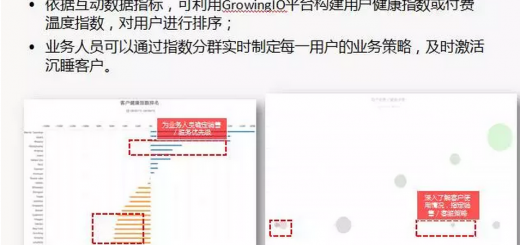 观点
观点
 观点
观点

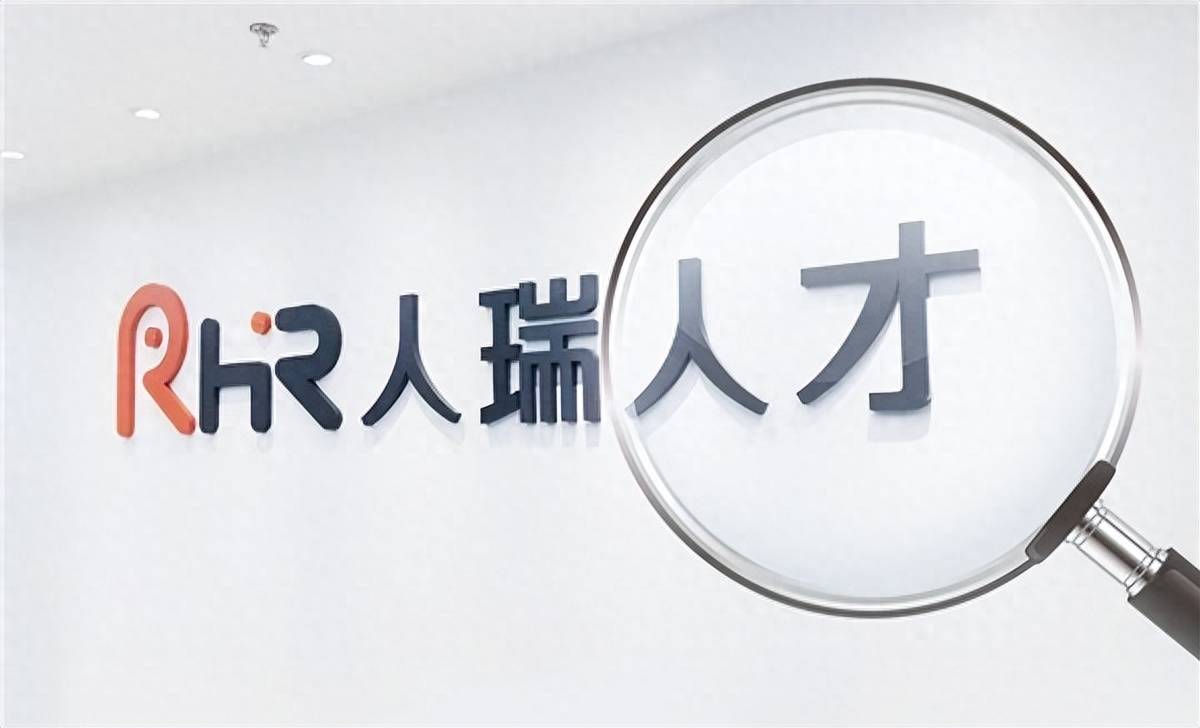



 扫一扫 加微信
hrtechchina
扫一扫 加微信
hrtechchina

